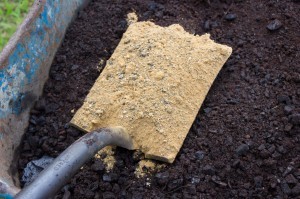While the lines between farming and gardening can be blurry, gardening is typically something we think of as smaller in size and closer to home. It can be a source of clean healthy food for our homes. It can also be a source of pride. Giant produce becomes the stuff of sport. Here are a few tips on how to best use biochar as a tool in maximizing the productivity of your garden.
Biochar lasts for hundreds of years in soil, but that doesn’t mean that you should only apply it once. Best results can be achieved with a significant initial application followed with smaller incremental applications. 5% to 10% by volume in the top 6 inches of soil has been observed as a great initial application (equal to about 1/4″ – 1/2″ then tilled in). Then, in following seasons, include biochar in your composting piles, include it with your fertilizers, spread a thin layer just before you mulch, use it to soften soil when transplanting, or if none of those are fitting, simply add extra biochar every few years.
In using some of the most fertile soils of the world as a reference, you want a high organic matter content of which about half should be biochar. That is right, many of the worlds most fertile lands already contain biochar in the topsoil, research has shown that pyrolytic carbon (biochar) makes up nearly half of the organic matter content in some of the more famously fertile soils (Mao, et. al, 2012,). This is visibly recognizable as a dark soil.
When transplanting from pots to the garden:
Biochar helps fluff up soils and gives seedlings a good start. It can be useful as side and top dressing when transplanting. To do this, it is suggested that a blend is made, the blend should have good compost (about 20%), biochar (about 10%), and garden soil. Carry the blend with you in a bucket and use it by the handful to help settle your new plants into the soil. Blend dry to moist, but not wet. Water the plants in after.
When sowing seeds:
A seed topping mix of biochar (20%), compost (30%) and garden soil can make a very fertile and fluffy covering for seeds sown. It is best to lightly cultivate the soil where the seeds are to be placed (according to seed label recommendations of course), then use this blend to cover the seeds to the recommended depth. Blend dry to moist, then soak the seeds in lightly after.
When mulching:
A thin layer of biochar spread just before mulching yields great results. When the mulch is peeled back a few weeks later, active roots and mycelia can often be observed inhabiting the biochar in the thin zone below the mulch. How thin is thin? It should look about like the Milky Way (in reverse color of course). One cubic foot of biochar can cover about 500 square feet in this manner.
Fire residues:
What about fire residues (charcoal and ashes) from wood stoves, outdoor grills, and fireplaces? As long as the wood that was burned was not treated with paints or other synthetic compounds it should be safe for use in gardens. It is best to use the fire residues from your own fires very sparingly at first. Ash has many valuable minerals but it is highly alkaline and if used heavily, can upset the pH of your soil and disrupt it’s fertility. Where pH is of high concern, ash portions can be separated from charcoal portions with rinsing, allowing you to apply only the charcoal (biochar) to your garden. Perhaps the best way to use fire residues is to include them into a compost – kitchen scraps, leaves, fire residues, a dash of soil (and patience) is a good start at making your own Terra Preta.
*Note:The ash from charcoal briquettes is not safe for use in gardens.
Bibliography
- Abundant and Stable Char Residues in Soils: Implications for Soil Fertility and Carbon Sequestration,, Environ. Sci. Technol, (2012)



